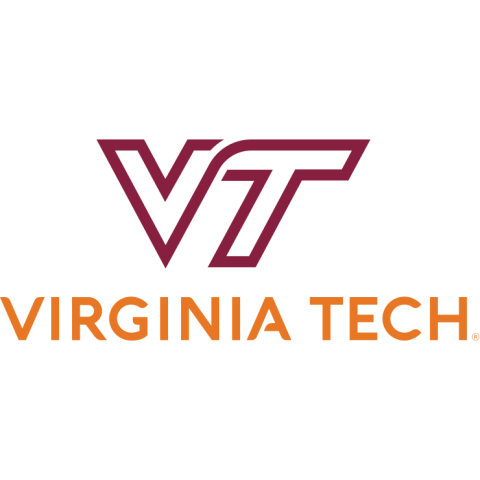
Balancing career readiness and finances: the case for abbreviated internships
The idea for brief winter internships – we call them W_Internships – first came up during an early architecture advisory board (AAB) meeting. A couple of board members were concerned about two groups of students: those who couldn’t take summer internships because they needed more lucrative jobs to pay for collegiate expenses; and those from small towns with no architecture firms nearby where they could intern. That didn’t strike us as fair to those students; everyone should be able to participate in enrichment and career-readiness opportunities such as internships.
As then undergraduate architecture chair in the College of Architecture, Arts, and Design at Virginia Tech, I was initially skeptical about the short duration: how much could students learn in just two weeks?
So I tried the programme at my architecture firm, inviting four interns to join us in New York City for a fortnight over winter break. The outcomes surpassed my expectations. One talented student designed a 12-foot-wide townhouse, presenting their work to the entire development team – twice. This internship experience led to a full-time position with our firm and the realisation of their townhouse design. The other three interns collaborated on an early design concept for a gender equity non-profit, presenting their ideas to the organisation’s board of directors.
- What support students need to succeed in work placements
- Four ways to weave job skills teaching into the university experience
- Tutor training for architect-educators: twinning, observation, reflection and testing
After observing the W_interns’ substantial learning, personal growth and accomplishments within the programme’s compact duration, I was convinced of its value and impact. This coming winter will mark the programme’s third official year.
Short-term internships: how they work
A cohort of third-year architecture students participated in the second year of the W_Internship from 2 to 12 January 2024. Partnering with architectural firms, the School of Architecture at Virginia Tech organised two-week paid internships over winter break, which students secured through interviews. During their internships, students contributed to project teams, conducted research, developed case studies and even created drawings, models, graphics and design concepts. The W_interns received feedback from firm members on their interviews and portfolios, significantly boosting their professional development and readiness for future careers.
To recruit employers for internships, we started with a call to those firms that attended the School of Architecture’s annual career day, and we had about 35 firms express interest. The first year we placed nine students; the second year 18. We are building the programme by word of mouth as well as targeted recruiting.
We launched W_Internship in collaboration with Virginia Tech’s Cooperative Education and Internship Program, which gave us scaffolding that included a standard hiring platform (Handshake), learning and employer agreements, pre-onboarding training for students, structured and shared reflection, and a post-experience employer survey. This year, we are using what we’ve learned to streamline the experience while maintaining the core aspects of bridge programmes that enhance the student learning experience.
Interested students apply, interview and are selected by participating firms, which conduct interviews over Zoom. During two weeks of their winter break, the students intern at the firm, maintaining a full-time work schedule. The students are compensated for their work either through an hourly wage or a stipend provided by the firm. In the programme’s second year, many students reported using the opportunity to test out living in a large or unfamiliar city. These students found temporary accommodation with relatives or friends.
Participating students praise the programme for improving their confidence, honing their understanding of what type of architecture they want to practise, and demonstrating the on-the-job value of their studies. Many students come from small towns or suburbs, and getting a taste of life in a large city helps them prepare for their future.
Students with W_Internships also reported having a leg up on other students when competing for summer internships, and many were invited to join their host firms. One of last year’s interns pointed out the low-risk/high-return structure of the programme for both employers and interns. A two-week commitment is far less daunting than three months.
The future of W_Internships
Aligning with Virginia Tech’s broader vision, this programme is poised to become part of the Bridge Experience Program, which aims to provide all undergraduates with place-based, experiential learning opportunities. It also furthers the Virginia Tech Advantage presidential priority, focusing on transformational experiences for all students, including those with unmet financial needs.
Working with the AAB board, we have set two clear objectives for the coming years: to expand the geographical reach and experiential scope of W_Internships. The first goal involves seeking opportunities with firms in more cities that align with students’ potential post-graduation career destinations. To broaden the diversity of professional experiences available, we are working to include a wide range of ownership models, scales and specialties within the built environment.
Internships play a crucial role in preparing college students for their future careers through:
- Hands-on experience: students gain practical, real-world experience in their chosen fields
- Skill development: students benefit from opportunities to develop their abilities in areas such as communication, teamwork, problem-solving and time management
- Industry insights: students learn about the industry they are interested in. They see first-hand how companies operate, what the day-to-day responsibilities are, and the challenges and opportunities within these industries
- Networking: students network with professionals in their field, which can open doors to job opportunities and mentorship
- Résumé-building: internship experience makes college students more attractive to potential employers
- Clarifying career goals: students can test out career paths and industries to see what aligns best with their interests, skills and values.
Overall, internships bridge academic learning and the professional world, providing students with practical experience, skills development, industry insights, networking opportunities, résumé-building and clarity about their career goals. W_Internships do all this in a condensed time frame, freeing up summers for higher income-generating work – a win-win situation.
Margarita McGrath is associate professor in the School of Architecture at Virginia Tech. She also owns a Brooklyn-based architecture practice.
If you would like advice and insight from academics and university staff delivered direct to your inbox each week, sign up for the Campus newsletter.




